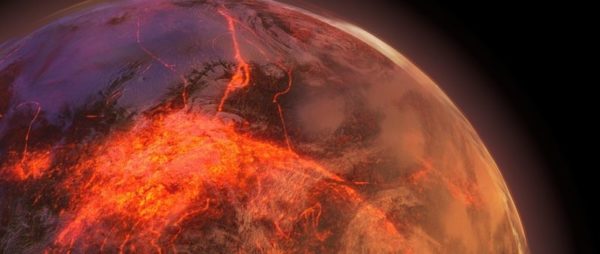
Scientists think they have identified a lava world so dramatic that it might boast a thin regional atmosphere of vaporized rock where it is closest to its star.
That exoplanet is called K2-141b and was originally discovered in 2017. The world is about half again as big as Earth but orbits so close to its star, which is one class smaller than our own, that it completes several loops each Earth-day with the same surface permanently facing the star. Now, scientists predict those factors mean that two-thirds of the surface of K2-141b is permanently sunlit — so much so that not only is part of the world covered in a lava ocean, but some of that rock may even evaporate away into the atmosphere.
“All rocky planets, including Earth, started off as molten worlds but then rapidly cooled and solidified,” Nicolas Cowan, a planetary scientist at McGill University in Canada and a coauthor on the new paper, said in a statement. “Lava planets give us a rare glimpse at this stage of planetary evolution.”


